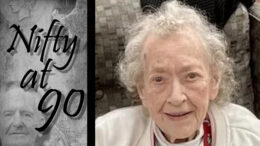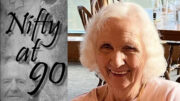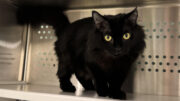MOSCOW (AP) — A Dubai airliner with 62 people on board nosedived and exploded in a giant fireball early Saturday while trying to land in strong winds in the southern Russian city of Rostov-on-Don, killing all aboard, officials said.
Russia’s Emergencies Ministry said the Boeing 737-800 operated by FlyDubai was carrying 55 passengers, most of them Russians, and seven crew members of various nationalities. FlyDubai confirmed that there were no survivors and said four children were among those killed.
The powerful explosion pulverized the plane but investigators quickly recovered both flight recorders. The cause of the crash wasn’t immediately known, but officials and experts pointed at a sudden gust of wind as a possible reason.
“Our primary concern is for the families of the passengers and crew who were on board. Everyone at FlyDubai is in deep shock and our hearts go out to the families and friends of those involved,” said CEO Ghaith al-Ghaith.
He said that pilots, who were from Cyprus and Spain, hadn’t issued any distress signal before the crash. They had 5,965 and 5,769 hours of flying time respectively, making them “quite experienced,” al-Ghaith added. The cabin crew included two Russians and citizens of Seychelles, Colombia and Kyrgyzstan.
Al-Ghaith said the plane was produced in 2011 and underwent a detailed maintenance inspection known as a C check in January.
Rostov regional Gov. Vasily Golubev said that “by all appearances, the cause of the air crash was the strongly gusting wind, approaching a hurricane level.”
According to the weather data reported by Russian state television, winds at ground level weren’t dangerously strong at the moment of the crash, but at an altitude of 500 meters (1,640 feet) and higher they reached a near-hurricane speed of around 30 meters per second (67 miles per hour).
Ian Petchenik, a spokesman for the flight-tracking website Flightradar24, told The Associated Press that the plane missed its approach then entered a holding pattern.
According to Flightradar24, the plane circled for about two hours before making another landing attempt. It said a Russian Aeroflot plane scheduled to land around the same time made three landing attempts but then diverted to another airport.
According to its data, the Dubai plane began climbing again after a go-around when it suddenly started to fall with vertical speed of up to 6,400 meters per minute (21,000 feet/min).
The closed-circuit TV footage showed the plane going down in a steep angle and exploding.
Al-Ghaith said the plane attempted to land in line with established procedures.
“As far as we know the airport was open and we were good to operate,” he said, adding that they couldn’t have landed without air traffic controllers’ permission.
Al-Ghaith said the pilots hadn’t issued any distress call and hadn’t attempted to divert to an alternate airport.
Viktor Gorbachev, director of the Russian airports association, said the airport in Rostov-on-Don has modern equipment to deal with adverse weather.
Several planes had landed in Rostov-on-Don shortly before the Dubai airliner was scheduled to touch down, but other flights later were diverted.
“It was an uncontrollable fall,” said Sergei Kruglikov, a veteran Russian pilot, said on Russian state television. He said that a sudden change in wind speed and direction could have caused the wings to abruptly lose their lifting power.
He said that the pilots would have understood seconds before the crash that they were going to die, but “passengers and the cabin crew likely didn’t realize they were facing imminent death.”
Pilot Vitaly Sokolovsky told Rossiya 24 television that a sudden gust of wind could be particularly dangerous at low altitude while the plane was flying slowly at low power and the pilot was throttling up the engines to make another run.
President Vladimir Putin offered his condolences to the victims’ families and top Russian Cabinet officials flew to the crash site to oversee the investigation.
Emirati authorities including the president, Sheikh Khalifa bin Zayed Al Nahyan, sent condolences to Putin, and Dubai ruler Sheikh Mohammed bin Rashid Al Maktoum, who also serves as the Emirates’ vice president and prime minister, expressed his regrets on his official Twitter feed.
In a statement expressing “shock and grief,” Cypriot President Nicos Anastasiades confirmed that the pilot was a Cypriot national, Aristos Socratous from Limassol.
Officials said the plane and bodies of the victims were torn into small pieces by the powerful blast, making identification difficult Investigators said they were working on the plane’s cockpit conversation recorder and another one recording parameters of the flight.
It was FlyDubai’s first crash since the budget carrier began operating in 2009. It was launched in 2008 by the government of Dubai, the Gulf commercial hub that is part of the seven-state United Arab Emirates federation. The carrier has been flying to Rostov-on-Don since 2013.
FlyDubai’s fleet consists of mint 737-800 aircraft, like the one that crashed. The airline says it operates more than 1,400 flights a week.
The airline has expanded rapidly in Russia and other parts of the former Soviet Union. Dubai is a popular destination for Russian vacationers, and many Russian expatriates live and work in Dubai, a city where foreigners outnumber locals more than 4-to-1.
FlyDubai has a good safety record. In January 2015, one of its planes was struck on the fuselage by what appeared to small-arms fire shortly before it landed in Baghdad. That flight landed safely with no major injuries reported.































